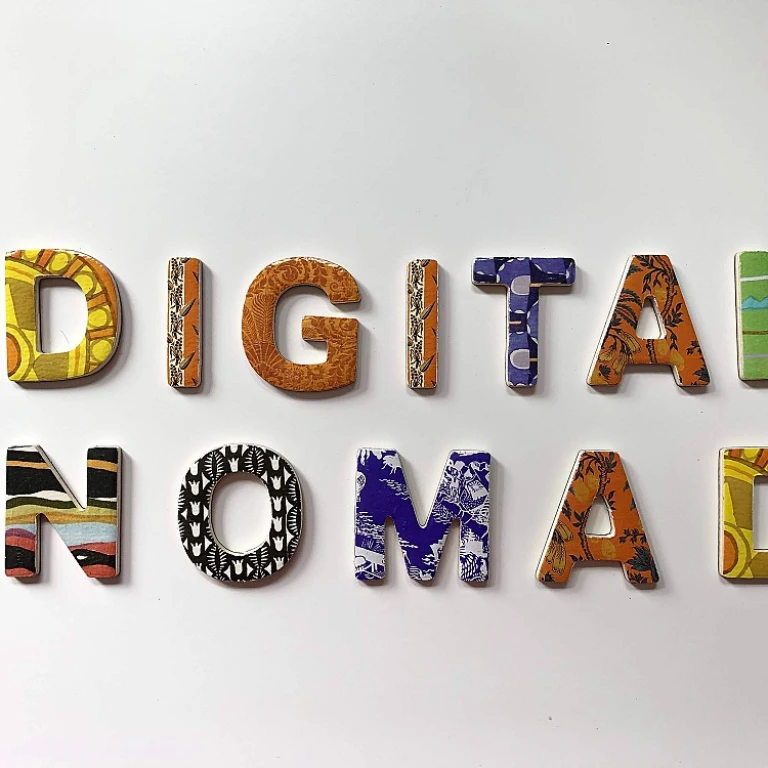The Rise of Micro Influencers
The Emergence of Smaller Voices in a Big World
In the vast landscape of social media, the rise of micro influencers is a trend that cannot be overlooked. These creators, often with fewer than 100,000 followers, are making a significant impact on digital marketing strategies. Unlike their celebrity counterparts, micro influencers offer a unique advantage: authenticity. Their content resonates with niche audiences, fostering a sense of trust and relatability that larger influencers might struggle to achieve.
Brands are increasingly recognizing the value of these influencers. By partnering with them, companies can tap into highly engaged communities that are more likely to convert into loyal customers. This shift is not just about numbers; it's about meaningful connections. As brands aim for genuine engagement over sheer reach, micro influencers are becoming a cornerstone of successful marketing campaigns.
Moreover, the cost-effectiveness of working with micro influencers allows brands to allocate resources to multiple campaigns, experimenting with different categories and strategies. This flexibility is crucial in a rapidly changing digital landscape where trends evolve in the blink of an eye.
As we explore the dynamics of influencer marketing, it's clear that the power of micro influencers is only set to grow. For those interested in understanding how to harness these trends for influencer growth, cracking the code of virality offers valuable insights into leveraging social media trends effectively.
TikTok and the Power of Short-Form Content
The Unstoppable Surge of Short-Form Content
In the fast-paced world of social media, TikTok has emerged as a powerhouse, revolutionizing the way influencers and brands connect with audiences. Its format, characterized by short, engaging videos, has captured the attention of millions, making it a key player in digital marketing strategies.
Short-form content on TikTok allows influencers to deliver messages swiftly and creatively, maximizing audience engagement in just a few seconds. This format is not only effective for capturing attention but also for maintaining it, as users are more likely to watch and interact with content that is concise and entertaining.
Brands are increasingly leveraging TikTok's unique platform to launch innovative marketing campaigns. The ability to create viral content that resonates with diverse audiences has made TikTok an essential tool for influencer marketing. With its algorithm favoring authentic and relatable content, creators can reach new heights of visibility and influence.
Moreover, the platform's integration of trends and challenges encourages community participation, allowing brands to engage with audiences in a more interactive manner. This participatory culture enhances brand visibility and fosters a sense of connection between the brand and its audience.
As TikTok continues to grow, its impact on influencer marketing is undeniable. The platform's focus on creativity and authenticity aligns perfectly with the evolving preferences of digital audiences, making it a vital component of any successful marketing strategy. For more insights on how TikTok is shaping the future of influencer marketing, check out this comprehensive guide.
Long-Term Partnerships with Influencers
Building Trust Through Consistency
In the ever-evolving world of influencer marketing, the focus is shifting towards establishing long-term partnerships between brands and influencers. Unlike one-off campaigns, these enduring collaborations foster a sense of authenticity and trust, which resonates more with audiences. When influencers consistently promote a brand over time, it signals a genuine endorsement, enhancing the brand's credibility.
Strategic Alignment and Engagement
Long-term partnerships allow for deeper strategic alignment between brands and influencers. This alignment ensures that the influencer's content aligns with the brand's values and marketing strategy, leading to more coherent and effective campaigns. By working closely over time, influencers can better understand the brand's goals and tailor their content to maximize engagement and impact. This approach is particularly effective on platforms like Instagram and TikTok, where consistent content can significantly boost audience engagement.
Maximizing ROI in Influencer Campaigns
Investing in long-term relationships with influencers can also be more cost-effective for brands. These partnerships often result in more efficient use of marketing budgets, as they reduce the need for constant negotiation and onboarding of new influencers. Additionally, the sustained exposure from long-term partnerships can lead to higher return on investment (ROI) by continuously engaging the audience and reinforcing brand messaging.
Adapting to Changing Trends
As the digital landscape continues to evolve, long-term partnerships offer brands the flexibility to adapt to new trends and shifts in audience preferences. Influencers, being at the forefront of these changes, can provide valuable insights into emerging trends and help brands stay relevant. This adaptability is crucial in a market where new platforms and content formats, such as live shopping and user-generated content, are constantly emerging.
Ultimately, long-term partnerships with influencers are not just about maintaining a presence on social media. They are about building a lasting connection with the audience, enhancing brand loyalty, and staying ahead in the competitive landscape of influencer marketing.
The Impact of Live Shopping
The Evolution of Live Shopping in Influencer Marketing
In recent years, live shopping has emerged as a dynamic trend in influencer marketing, blending the excitement of live broadcasts with the convenience of online shopping. This approach allows influencers to engage directly with their audience in real-time, creating a sense of urgency and connection that traditional marketing strategies often lack.
Live shopping sessions typically take place on platforms like Instagram and TikTok, where influencers can showcase products, offer exclusive deals, and answer questions from viewers. This interactive format not only boosts engagement but also builds trust between the influencer and their audience, as viewers can see products being used and reviewed in real-time.
Brands are increasingly recognizing the potential of live shopping to drive sales and enhance brand loyalty. By partnering with influencers who resonate with their target audience, brands can tap into the influencer's established community and leverage their credibility to promote products authentically.
Moreover, live shopping aligns with the broader marketing trends of authenticity and transparency. As consumers become more discerning, they seek genuine recommendations from influencers they trust. This trend underscores the importance of long-term partnerships with influencers, as brands aim to foster ongoing relationships that benefit both parties.
As digital marketing continues to evolve, live shopping is set to become an integral part of influencer campaigns. By integrating this strategy into their marketing campaigns, brands can stay ahead of the curve and capitalize on the growing demand for interactive and engaging content.
The Role of UGC and Affiliate Marketing
The Power of User-Generated Content and Affiliate Marketing
In the ever-evolving landscape of influencer marketing, user-generated content (UGC) and affiliate marketing have emerged as powerful tools for brands looking to enhance their digital marketing strategies. As social media platforms like TikTok and Instagram continue to dominate the digital space, the role of UGC in marketing campaigns has become more significant than ever.
UGC offers brands a unique way to engage with their audience by leveraging content created by real users. This not only builds trust but also fosters a sense of community around the brand. When audiences see content from everyday users rather than polished brand-generated content, it often feels more authentic and relatable. This authenticity can drive higher engagement rates and, ultimately, more conversions.
Affiliate marketing, on the other hand, provides influencers with an opportunity to monetize their content while promoting products they genuinely believe in. This form of marketing creates a symbiotic relationship between brands and influencers, where both parties benefit from increased sales and exposure. As influencers become more selective about the brands they partner with, authenticity remains a key factor in maintaining trust with their followers.
Brands that successfully integrate UGC and affiliate marketing into their campaigns are likely to see a boost in their overall marketing performance. By encouraging their audience to create content and participate in affiliate programs, brands can tap into a vast pool of creativity and reach that goes beyond traditional marketing methods.
As we look to the future of influencer marketing, it's clear that the integration of UGC and affiliate marketing will continue to be a driving force. These strategies not only enhance brand visibility but also foster deeper connections with audiences, paving the way for long-term success in the digital marketing arena.
Future Trends in Influencer Marketing
Anticipating the Next Wave in Influencer Marketing
As the digital landscape continues to evolve, influencer marketing is expected to adapt and transform in several key ways. Here are some anticipated trends that brands and influencers should keep an eye on:
- Integration of AI and Data Analytics: The use of artificial intelligence and data analytics will become more prevalent in influencer marketing. These tools will help brands better understand audience preferences and optimize campaigns for maximum engagement and effectiveness.
- Focus on Authenticity and Transparency: Consumers are becoming increasingly savvy and are looking for authentic connections with brands. Influencers who prioritize genuine engagement and transparency will likely see more success in their campaigns.
- Expansion of Niche Communities: As seen with the rise of micro influencers, niche communities are gaining traction. Brands that tap into these specific audiences can create more targeted and effective marketing strategies.
- Enhanced Use of Augmented Reality (AR): AR technology is set to play a bigger role in influencer campaigns, offering interactive and immersive experiences that can captivate audiences in new ways.
- Growth of Long-Form Content: While short-form content on platforms like TikTok continues to thrive, there is also a growing interest in long-form content that allows for deeper storytelling and engagement.
- Increased Emphasis on Sustainability: As environmental concerns become more prominent, influencers and brands will need to demonstrate their commitment to sustainability, which will resonate with socially conscious audiences.
These trends indicate a shift towards more personalized and meaningful interactions between brands, influencers, and audiences. By staying ahead of these developments, brands can craft innovative marketing strategies that resonate in the ever-changing digital world.








